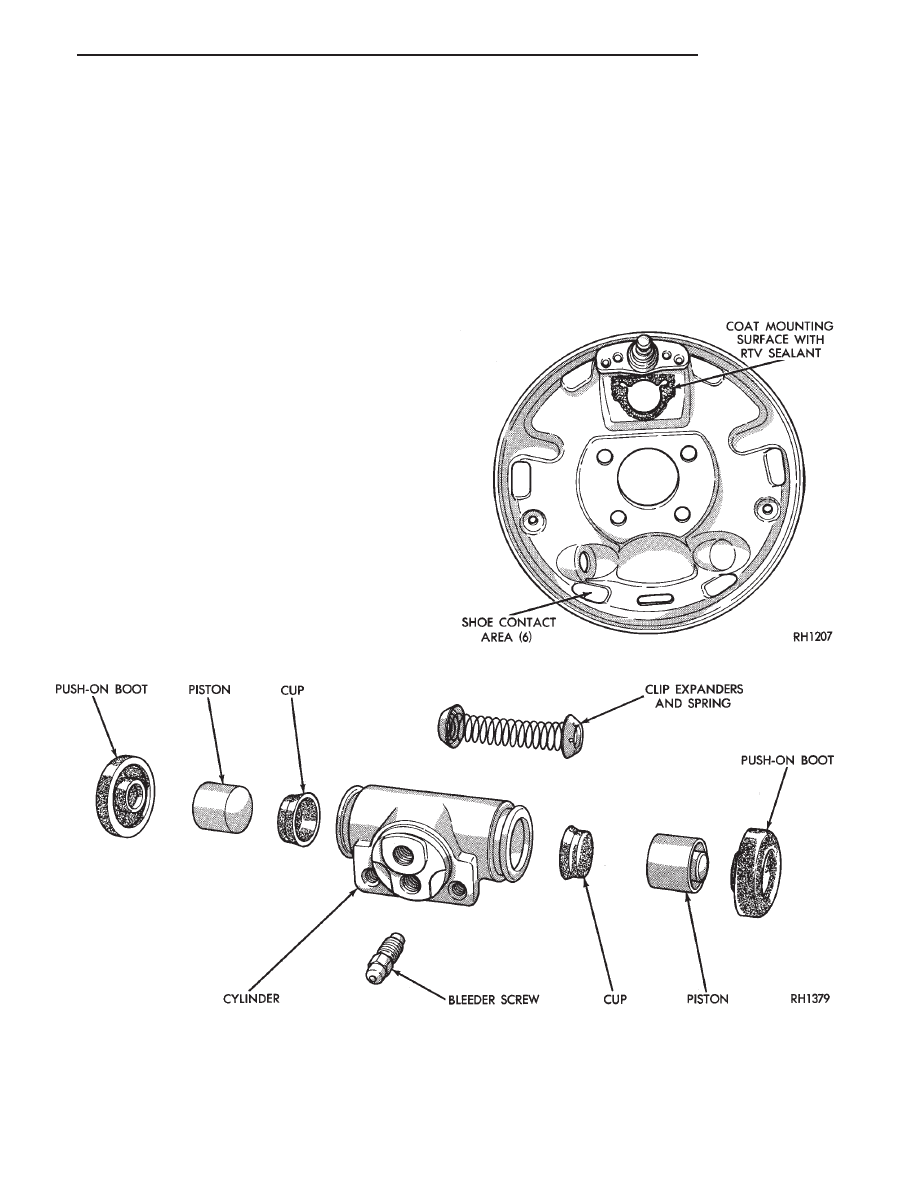Chrysler Town & Country/Voyager, Dodge Caravan, Plymouth Voyager. Manual - part 161

a soft tool such as a dowel rod, press out the cup and
piston that remain in the wheel cylinder.
(3) Wash wheel cylinder, pistons, and spring in clean
brake fluid or alcohol; (DO NOT USE ANY PETRO-
LEUM BASE SOLVENTS) clean thoroughly and
blow dry with compressed air. Inspect cylinder bore
and piston for scoring and pitting. (Do not use a rag as
lint from the rag will stick to bore surfaces.)
Wheel cylinder bores and pistons that are badly
scored or pitted should be replaced. Cylinder walls that
have light scratches, or show signs of corrosion, can
usually be cleaned with crocus cloth, using a circular
motion. Black stains on the cylinder walls are caused
by piston cups and will not impair operation of cylin-
der.
ASSEMBLING WHEEL CYLINDERS
Before assembling the pistons and new cups in the
wheel cylinders, dip them in clean brake fluid. If the
boots are deteriorated, cracked or do not fit tightly on
the pistons or the cylinder casting, install new boots.
(1) Coat cylinder bore with clean brake fluid.
(2) Install expansion spring with cup expanders in
cylinder. Install cups in each end of cylinder with open
end of cups facing each other (Fig. 3).
(3) Install piston in each end of cylinder having the
flat face of each piston contacting the flat face of each
cup, already installed (Fig. 3).
(4) Install a boot over each end of cylinder. Be
careful not to damage boot during installation.
INSTALLING WHEEL CYLINDERS
(1) Apply Mopar
t Gasket In-A-Tube or equivalent
sealant around wheel cylinder mounting surface
(Fig. 4).
(2) Install wheel cylinder onto brake support, and
tighten the wheel cylinder to brake support plate
attaching bolts to 8 N
Im (75 in. lbs.).
(3) Attach hydraulic brake tube to wheel cylinder,
and tighten tube to wheel cylinder fitting to 17 N
Im
(145 in. lbs.).
(4) Install brake shoes on support plate.
(5) Install rear brake drum onto rear hub. Install
rear wheel and tire assembly, tighten wheel stud nuts
to 129 N
Im (95 ft. lbs.).
(6) Adjust the rear brakes, (See Adjusting Service
Brakes) in Service Adjustments section in this group of
the service manual.
(7) Bleed the entire brake system. See (Bleeding
Brake System) in Service Adjustments section in this
group of the service manual.
Fig. 3 Rear Wheel Cylinder
Fig. 4 Apply Sealant on Support Plate
.
BRAKES
5 - 27